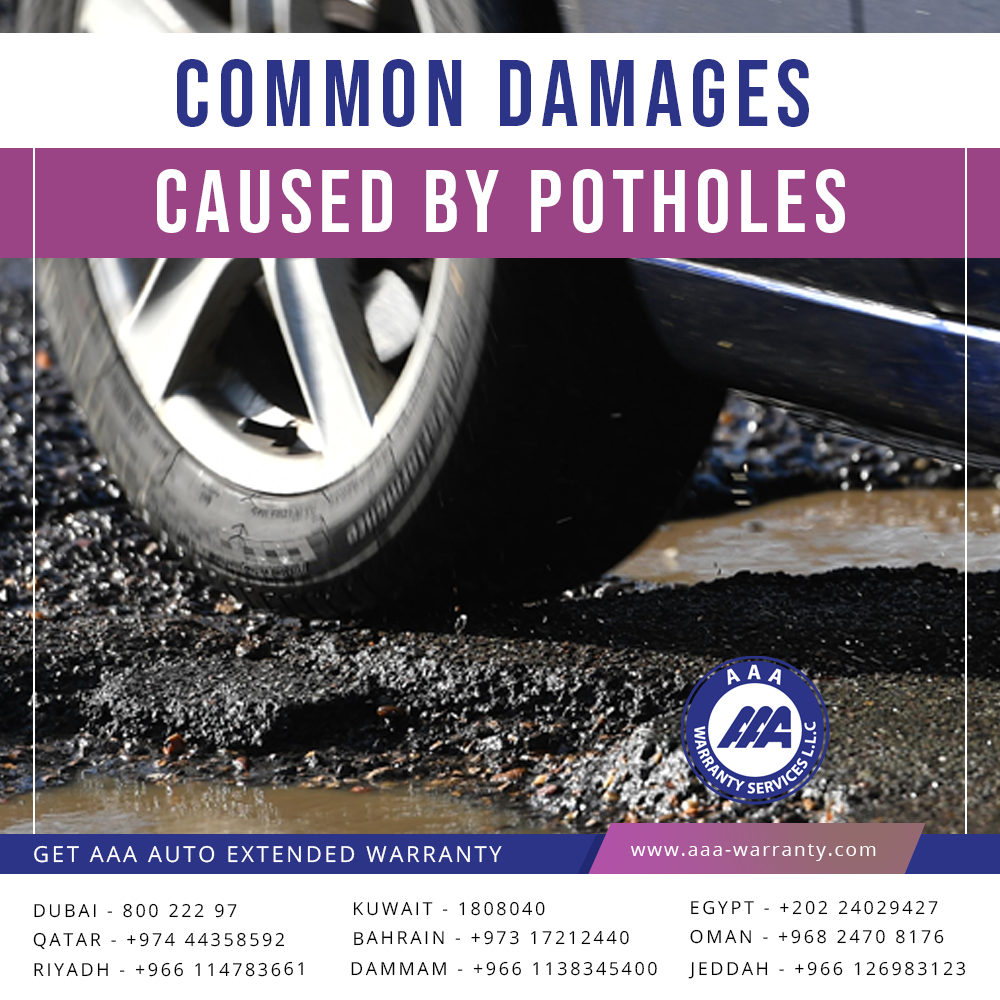Few things make road users angry quite like potholes, and the sad part is they aren’t going away. It’s a matter to be careful of the hidden potholes as it causes a lot of damages to the vehicles presenting a serious risk for drivers and cyclists. But what should you do if your car has been damaged by one? Have a look at the common damages caused by the potholes.
Common Damages Caused by Potholes
A large pothole is enough to create havoc to a running car. Various parts of the car will be damaged and so you should look for problems in the following areas after hitting one:
Tires
The tires are most likely to be affected badly with the sidewall bulging, tread splits and flats when the vehicle hits the pothole. A potholes sharp edges cause the tire to compress more causing the runner to split stretch or tear. Even if your tire is not affected after hitting a pothole, it’s better to check the wheel for any signs of damage.
Wheels
When the car hit the pothole very fiercely, it could crack the wheel leading to a range of problems which could be tough to sort out. If the wheel got bent, it may be repairable, but if it’s broken, you may have to replace with a new one. Thin Cracks are difficult to spot, so ensure you clean the wheel thoroughly to check for signs of damage.
Suspension
Quick movements in the road can damage the suspension taking to poor steering and ride performance to a bad level. Check the struts, shocks and ball joints for signs of sheering or buckling after hitting a pothole. The symptoms of damaged suspension include wandering steering, pulling to one side or unusual vibrations.
Exhaust
If you drive into a deep pothole, the undercarriage can make contact with the road, which can cause severe damage to the exhaust. Check the exhaust pipe for signs of damage, including holes or dents, which could impact performance or cause an increase in emissions.
Driving Tips for Avoiding Pothole Damage
Here, are some driving tips for avoiding potholes and reducing the damage caused by hitting one.
- Be careful on unfamiliar roads and keep an eye for potholes, or in wet weather when they may be hidden by standing water.
- When you over the speed you may hit potholes on the road and damage the vehicle, so always stick to the speed limit.
- Stay alert to pedestrians and traffic when avoiding potholes, and don’t deviate unnecessarily.
- Keep a good distance from the car in front so you can check for potholes on the road ahead, and change your course slightly to avoid them.
- Hold the wheel in the 10 and 2 positions to maintain control of the car when driving on a road with potholes.
- If you have to drive into a pothole, do so slowly and allow the wheels to roll freely into and out of the hole, without turning the wheel or braking needlessly.
- Potholes aren’t going away, so it pays to be prepared. Keep puncture kit in your car, and you can get back on the road after a pothole has caused your tire to deflate.
When your car damages after being hit in a pothole, you may end up with a hefty auto repair bill. If your car is not under warranty coverage, you can have extended warranty, it can cover the auto repair expenses without any hassle. Along with the Extended Warranty Plan, you can have the Roadside Assistance policy as well to avail quick assistance while in emergency situations. Choose the best warranty plan from reliable provider AAA Warranty Services and obtain the benefits. You can avail the flexible auto extended warranty plans for new and used cars.
Popular Post
- Should you buy an extended protection plan for your electronics?.
- Marine Extended Warranty: Should you buy one?.
- Is it worth buying an extended auto warranty?.
- Roadside Assistance: What Is It, and Do You Need It?.
- Electronics Extended Warranty Features and Benefits.
- Electronics Extended Warranty Features and Benefits.
- Electronics Extended Warranty Features and Benefits.
- Experts in Extended Warranty services - AAA Warranty Services.
- Know Auto Extended Warranty .
- Why you should buy an auto extended warranty?.
